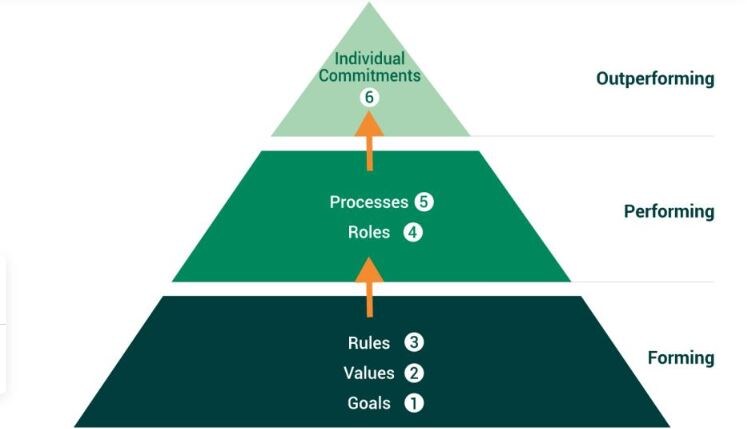
The six dimensions of winning teams
Teams with clear goals, values, rules, roles and processes, backed by full individual commitment, are primed for peak performance
 Goals, values and rules are three distinct and complementary ways to bond team members. Together, these elements create the solidarity needed for group members to become a true team.
Image: Shutterstock
Goals, values and rules are three distinct and complementary ways to bond team members. Together, these elements create the solidarity needed for group members to become a true team.
Image: Shutterstock
In 1996, expert climber David Breashears* united his team behind a seemingly impossible goal: capture Mount Everest on IMAX film.
While many climbers pursue the peak with a singular obsession, Breashears never forced his team to get to the top, as he believed the mountain “has to allow us to climb it”. This wisdom led them to turn back on their first ascent when they felt conditions were not secure.
It was on their second attempt that Breashears’ team not only achieved their filmmaking goal, but also assisted climbers caught in a sudden, devastating blizzard. This dramatic rescue became the focus of their documentary Everest, the highest-grossing IMAX film ever made.
This historic expedition is a powerful case study, demonstrating the six key dimensions needed to manage a team for high performance: goals, values, rules, roles, processes and individual commitment.
Drawing on insights from our studies in sports and corporations, we propose an expansion of the famous GRPI framework (goals, roles and responsibilities, process and interpersonal relations) developed by Richard Beckhard in 1972. In our recent working paper, we argue that the framework omits two essential elements: values and rules. These additional dimensions are essential for building teams that go beyond simply functioning and truly excel.
[This article is republished courtesy of INSEAD Knowledge, the portal to the latest business insights and views of The Business School of the World. Copyright INSEAD 2024]


















